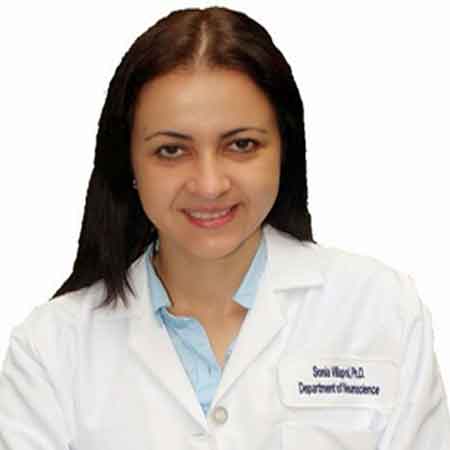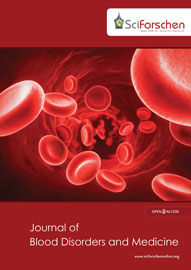
Assistant Professor
- :202-687-1804
Department of Neuroscience
Georgetown University
USA
Education
| 08/2010 – 04/2014 | Postdoctoral Research Fellow | Center for Neuroscience and Regenerative Medicine (CNRM). Neuroprotection after TBI. Department of Pharmacology. Uniformed Services University, Bethesda, MD. |
| 10/2007-08/2010 | Postdoctoral Research Fellow | Dr. Christiane Charriaut-Marlangue laboratory. -10/07 – 12/08 – UMR-CNRS 7102, Department of Neurobiology of Adaptive Processes. Pierre and Marie Curie University (Paris 6), Paris, (France). |
| 02/2003 – 10/2007 | Ph.D. in Neuroscience | Institute of Neuroscience (INc) and Department of Cellular Biology, Physiology and Immunology at Autonomous University of Barcelona (UAB). |
Biography
She is graduated from the University of Santiago of Compostela, Spain in 2002 with a Bachelor´s degree in Molecular Biology and Biotechnology, and received her Master´s degree and Ph.D. in Neuroscience from the Autonomous University of Barcelona, Spain in 2007. Starting in 2007, She worked as a postdoctoral fellow at CNRS in the University Pierre and Marie Curie VI and INSERM in Paris, France; and NIH and USUHS/Center for Neuroscience and Regenerative Medicine in Bethesda, MD. In 2014 she is joined to Georgetown University where currently she is appointed as Assistant Professor in the Department of Neuroscience.
Research Interest
Her research interests is mainly focused on the elucidating of mechanisms of cell death, gliosis, inflammation and neurogenesis via several models of brain damage and how inflammatory mediators connect the brain with the periphery. To date, her research has mainly been dedicated towards the development of novel therapeutics to repair the brain after damage.
Professional Activities:
Honors &Awards
| 2014 | 3st Place Poster award. National Capital Area TBI Research Symposium, NIH. Bethesda, MD. |
| 2013 | 1st Place for Young Career Trajectory Award, at the 4th Young Investigator's Workshop. Foundation Barrié & Biomedical Research Center (INIBIC), CHUAC. A Coruña (Spain). |
| 2013 | Poster Competition Finalist National Neurotrauma Society, Nashville, TN. |
| 2013 | 1st Place Poster award. National Capital Area TBI Research Symposium, NIH, (Bethesda, MD). |
| 2013 | National Neurotrauma Society Travel Grant Awardee. Nashville, TN. |
Publications
- Villapol S*, Balarezo M, Affram K, Saavedra JM, Symes AJ. Neurorestoration after traumatic brain injury through Angiotensin II receptor blockage. Brain. 2015 Jun 26. pii: awv172. *Corresponding author.
- Villapol S*. Consequences of hepatic damage after traumatic brain injury: current outlook and potential therapeutic targets. Neural Regeneration Res. In press. *Corresponding author.
- Winston CN, Noel A, Neustadtl A, Parsadanian M, Barton D, Chellappa D, Wilkins TE, Alikhani AD, Zapple DN, Villapol S, Planel E and Burns MP. Extending the inter-injury interval prevents habituation to dendritic spine loss after highly repetitive head trauma. Am J Pathology, In press.
- Villapol S*, Kryndushkin D, Balarezo M, Campbell A, Saavedra JM, Shewmaker FP, Symes AJ*.
- Hepatic expression of Serum Amyloid A1 is induced by traumatic brain injury and modulated by telmisartan. Am J Pathology, 2015, 185:2641-2652. *Corresponding author.
- Washington PM, Villapol S, Burns MP. Polypathology and dementia after brain trauma: Does brain injury trigger distinct neurodegenerative diseases, or should it be classified together as traumatic encephalopathy?. Exp. Neurol. 2015 Jun 16. pii: S0014-4886(15)30025-X. Review.
- Villapol S, and Saavedra JM. Neuroprotective effects of angiotensin receptor blockers. Review. Am J Hypertens. 2015 Mar;28(3):289-99.
- Villapol S*, Byrnes K, Symes AJ*. Temporal dynamics of astrocytes-vasculature interaction, astrogliosis and apoptosis that occurs in the pericontusional cortical brain after traumatic brain injury. Front Neurol.
- 2014 Jun 4;5:82. *Corresponding author.
- Susarla B, Villapol S, Yi JH, Geller HM, Symes AJ. Temporal patterns of cortical proliferation of glial cell populations after traumatic brain injury in mice. ASN, March 27, 2014.
- Villapol S, Wang Y, Adams M, Symes AJ. Smad3 deficiency increases cortical and hippocampal neuronal loss following traumatic brain injury. Exp Neurol. 2013 Oct 9. pii: S0014-4886(13)00311-7.
- Hafko R, Villapol S, Nostramo R, Symes AJ, Sabban EL, Inagami T, Saavedra JM. Commercially available Angiotensin II AT2 receptor antibodies are nonspecific. PLoS One. 2013 Jul 1;8(7):e69234.
- Logan TT, Villapol S, Symes AJ. TGF-β superfamily gene expression and induction of the Runx1 transcription factor in adult neurogenic regions after brain injury. Plos One. 2013;8(3):e59250.
- Villapol S, Yaszemski AK, Logan TT, Sánchez-Lemus E, Saavedra JM, Symes AJ. Candesartan, an Angiotensin II AT(1)-Receptor Blocker and PPAR-γ Agonist, Reduces Lesion Volume and Improves Motor and Memory Function After Traumatic Brain Injury in Mice. Neuropsychopharmacology. 2012 Dec;37(13):2817-29.
- Charriaut-Marlangue C, Bonnin P, Gharib A, Leger PL, Villapol S, Pocard M, Gressens P, Renolleau S, Baud O. Inhaled Nitric Oxide Reduces Brain Damage by Collateral Recruitment in a Neonatal Stroke Model. Stroke. 2012 Nov;43(11):3078-84.
- Bonnin P, Leger PL, Villapol S, Deroide N, Gressens P, Pocard M, Renolleau S, Baud O, Charriaut-Marlangue C. Dual action of NO synthases on blood flow and infarct volume consecutive to neonatal focal cerebral ischemia. Exp Neurol. 2012 Jul;236(1):50-7.
- Villapol S, Fau S, Renolleau S, Biran V, Charriaut-Marlangue C, Baud O. Metatonin promotes myelination by decreasing white matter inflammation after neonatal stroke. Pediatr Res. 2011 Jan;69(1):51-5.
- Villapol S, Bonnin P, Fau S, Baud O, Renolleau S, and Charriaut-Marlangue, C. Unilateral blood flow decrease induces bilateral and symmetric responses in the immature brain. Am J Pathol. Nov;175(5):2111-20.2009.
- Gelot A, Villapol S, Renolleau S., and Charriaut-Marlangue, C., Astrocytic demise in the developing rat and human brain after hypoxic-ischemic damage, Dev Neurosci. 2009 Aug 11;31(5):459-470., 2009.
- Villapol S, Gelot A, Renolleau S, and Charriaut-Marlangue C. Astrocyte responses after neonatal ischemia: the yin and the yang. Neuroscientist. 2008 Aug;14(4):339-44. Review.
- Faiz M, Acarin L, Villapol S, Castellano B, Gonzalez B. Migratory SVZ precursors generate new cortical neurons after immature damage. Mol Cell Neurosci. 2008 Jun;38(2):170-82.
- Villapol S, Acarin L, Faiz M, Castellano B, González B. Survivin and Heat Shock Protein 25/27 colocalize with cleaved caspase-3 in surviving reactive astrocytes following excitotoxicity to the immature brain. Neuroscience. 2008 Apr 22;153(1):108-19.
- Villapol S, Acarin L, Faiz M, Castellano B, González B. Distintic spatial and temporal activation profile of apoptotic pathways in neurons and glial cells after excitotoxic damage in the neonatal rat brain. J Neurosci Res. 2007 Dec;85(16):3545-56.
- Acarin L, Villapol S, Faiz M, Rohn TT, Castellano B, González B. Caspase-3 activation in astrocytes following postnatal excitotoxic damage correlates with cytoskeletal remodeling but not with cell death or proliferation. Glia, 2007 Jul;55(9):954-65.
- Spiegler M, Villapol S, Biran V, Goyenvalle C, Mariani J, Renolleau S, Charriaut-Marlangue C. Bilateral Changes after neonatal ischemia in the P7 rat brain. J Neuropathol Exp Neurol. 2007 Jun;66(6):481-490.
- Faiz M, Acarin L, Peluffo H, Villapol S, Castellano B, Gonzalez B. Cu/Zn superoxide dismutase expression in progenitor and stem cells of the postnatal subventricular zone. Neurosci Lett. 2006 Jun 19;401(1-2):71-6. Mar 29, 2006.

